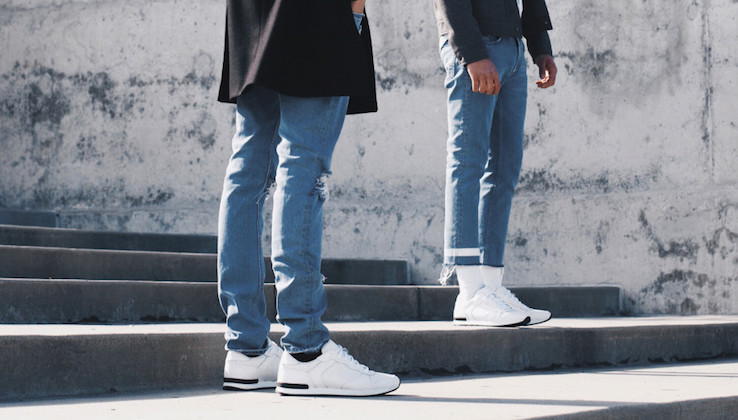Subscribe: iTunes | Stitcher | Google Play |Spotify
As any sneakerhead or streetwear fanatic will tell you, the drop model is part of the fabric of the streetwear retail industry.
The drop model, which is shorthand for a brand releasing a limited amount of highly sought-after product all at once, developed out of the fact that some retailers simply couldn’t afford to produce massive quantities of product. Fans began to scheme to grab the latest and greatest styles before they were no longer on the shelves. The retail strategy has since been introduced to the mainstream consumer, adopted by major brands including Gucci, Nike and Louis Vuitton.
“I think the younger generation has adapted, and drops are how they’re used to buying,” said industry veteran Wil Whitney. “They’re an entire generation that’s used to it. Cue in ComplexCon: Imagine a line outside of Supreme. Now imagine 10 of those at the same time, under one roof, waiting for really good, exclusive product. If you want it, that’s what you have to do. I see the kids online — they have fun with it, they truly do. But it’s not for me, because that’s not how I’ve ever shopped, and you can’t always teach old dogs new tricks.”
But as these drops continue to hit the mainstream market, some retailers are starting to fear that consumers are growing weary of the never-ending chase for ultra-hyped products. Others are making the shift to an online drop model to avoid the hazards that can come with having lines of hundreds of people outside their stores.
In episode two of Glossy Trend Watch: Streetwear Edition, Danny Parisi sits down with Wil Whitney, who was one of the original founders of Nom de Guerre and now manages U.S. brand relations for Sneakersnstuff. Whitney discusses how sneaker retail and the drop model have evolved over time, and why the hype bubble will inevitably burst. Edited highlights below.
The modern drop
“It depends on what the retailers are willing to do. Some of the more experienced retailers are not letting people line up anymore because of the altercations that can come with that. It’s a shame, because it could be peaceful. It used to be cool, and kids would hang out, share food and look out for each other. But not everyone became friends with each other in the line, and it became a competition. So if you showed up late, and there’s 100 people in front of you, you start to realize that you might not get anything if they only have 80 pairs of shoes. Now, we avoid all of this by using a raffle system where people can sign up on our site, and we have a really intricate system that weeds out a lot of the bots so we can get real people. After that, it goes to a third party for the names to get drawn, and those winners are contacted via email, then they get a guaranteed chance to buy the shoes.”
The city determines the drop
“All of the cities are different. At Sneakersnstuff, we’re global, so the product is valued differently in different parts of the world. Jordans do really well in New York City, so we always have to do a drawing in NYC, where we might not have to in Berlin. That product is still wanted in Berlin — it will still sell out — but it’s not 400 people waiting outside of the store to get it.”
Balancing profits with customer care
“I think I can speak for a lot of the boutique retailers out there that most of their revenue comes from these high-priced, highly desired items. It also depends on how much quantity you’re getting. We’re starting to realize and communicate to the brands that we need more product. For example, if we have 100,000 people sign up for a draw, and there are only 100 pairs of shoes, that’s a lot of people that aren’t getting serviced. I come from a background in the service and retail industries — that’s kind of how I got to where I am now, I’m the nice guy in retail — and I hate when people don’t get what they need or what they want. When that many people aren’t getting these shoes, they get used to it, but after a while, they really start to feel defeated.”




